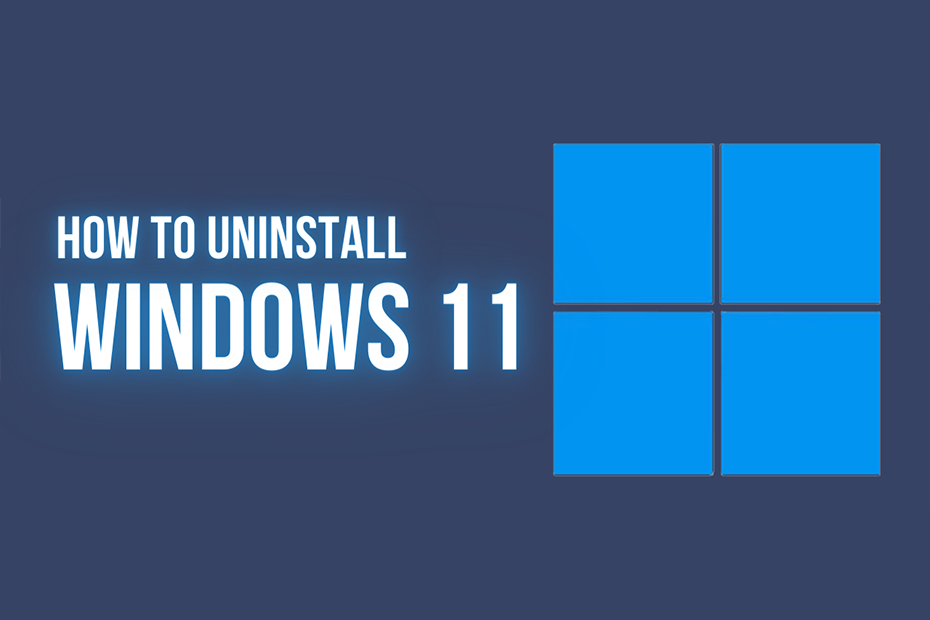Windows 11, the latest operating system from Microsoft, has garnered mixed reactions from users. Some have embraced its new features and modern design, while others may find themselves wanting to revert to their previous OS. Should you belong to the latter group and are looking for a comprehensive guide on how to uninstall Windows 11, you’ve found it. We’ll walk you through the steps of rolling back to an earlier version of Windows in this in-depth how-to article.
Backup Your Data
Before embarking on the uninstallation journey, it’s crucial to back up your important data. While the process generally doesn’t erase personal files, it’s always wise to have a backup, just in case. Back up your files on an external hard drive, in the cloud, or however you like to keep them safe.
Create a System Restore Point
Windows 11 allows users to create a system restore point, enabling them to revert to the current state if something goes wrong during the uninstallation process. To create a restore point:
Type “Create a restore point” in the Windows search bar.
Click on the corresponding result.
In the System Properties window, navigate to the “System Protection” tab.
Press the “Create” button, name your restore point, then press “Create” again.
Check for Updates
Make sure your system has the newest updates and fixes. This ensures that you’re uninstalling Windows 11 in the most stable environment.
Download the Previous Windows Version: Before uninstalling Windows 11, you need to have the installation media for your previous Windows version (e.g., Windows 10). If you don’t have it yet, you can get it from the official Microsoft website.
Backup Windows 11 Activation Key
If you upgraded to Windows 11 from a previous version and your device came with a digital license, it’s advisable to backup your activation key. This can be done using third-party tools or by linking your Microsoft account to your digital license.
Prepare Bootable USB/DVD
Create a bootable USB drive or burn a DVD with the installation files of your previous Windows version. Microsoft has a tool that you can download from their website to make installation media.
Boot from the Installation Media
Insert the bootable USB or DVD into your computer and restart it. Access the boot menu during startup (usually by pressing a key like F2 or ESC) and select the installation media as the boot option.
Install the Previous Windows Version
Please follow the directions on the screen to install the older version of Windows. When prompted, select the option to perform a clean installation. This will overwrite Windows 11 and install your chosen version.
Complete the Setup
Once the installation is complete, go through the initial setup process for your previous Windows version. This means making or logging in with a Microsoft account, choosing your settings, and adjusting how the computer works.
Restore Backed-Up Data
Retrieve your backed-up data from the external storage device or cloud service and transfer it to the newly installed Windows version.
Activate Windows
If prompted, activate your Windows version using the backup activation key or by linking your Microsoft account.
Check for Updates Again
After the installation is finished, make sure to check for any updates to make sure your system has the newest patches and drivers.
Optional Reinstall Software and Drivers
While the uninstallation process generally removes installed applications, it’s advisable to reinstall any software and drivers that may have been affected during the transition.
Finalize the Uninstallation
Once you’ve completed all the necessary steps, you can consider the uninstallation of Windows 11 finalized. Your system should now be running the previous Windows version seamlessly.
Conclusion
It may seem hard to go back to an older version of Windows 11, but you can do it easily by following our instructions on how to uninstall Windows 11. Remember to back up your data, create a restore point, and follow each step carefully to ensure a smooth transition. By the end of this guide, you should have successfully uninstalled Windows 11 and restored your computer to its previous Windows version.
